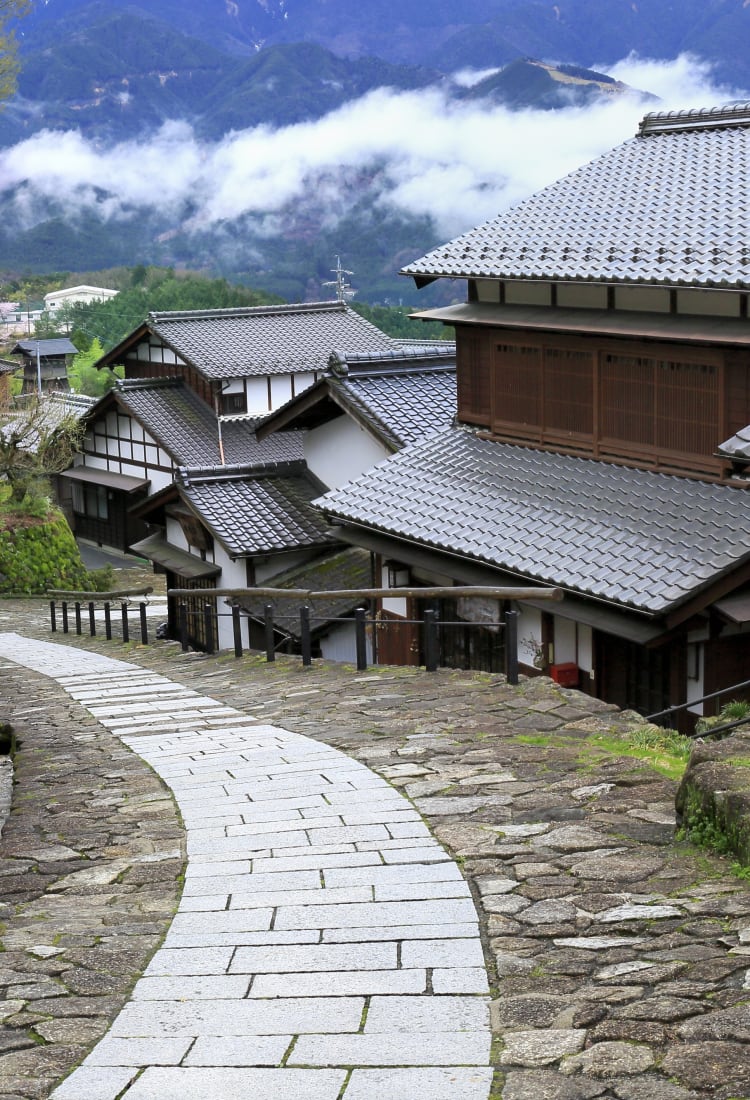

GIFU Nakatsugawa & Around Scenes straight out of a period drama, plus gorges, waterfalls and lakes
Scenes straight out of a period drama, plus gorges, waterfalls and lakes
Located in the southeastern corner of Gifu Prefecture, Nakatsugawa is home to the perfectly preserved 17th-century post town of Magome , turn-of-last-century scenes at Taisho Village, and the ruins of Naegi Castle.
The area also draws many outdoor fans, here to enjoy everywhere from Mt. Ena to the ancient forests and Tsukechi Gorge to the Tokai Nature Path and Lake Nenoue, which make this great trekking territory. Campgrounds are plentiful here as well.
Don't Miss
- Magome, a post town that still feels like 17th-century Japan
- Hiking along the dramatic Tsukechi Gorge and scaling Mt. Ena
- Taisho-mura, a glimpse into Japanese life in the 1910s and 1920s
How to Get There
Nakatsugawa Station is the area's main transportation hub.
Nakatsugawa is on the JR Chuo Main Line, just under an hour from Nagoya and around two hours from Gifu (change trains in Tajimi). It is within easy reach of Matsumoto Station in Nagano Prefecture.
From there, buses go to all major tourist locations and connect with local towns and villages.





Edo life in an old Nakasendo post town
Nakatsugawa was once a post town on the Nakasendo road from Tokyo to Kyoto. Restored Edo period (1603-1867) buildings—including warehouses, sake shops and restaurants—offer a look into Nakatsugawa's past, and the Nakasendo Historical Museum provides context.
The grounds around the ruined Naegi Castle and Asahigaoka Park (home to Asahigaoka Shrine and Nanrinji Temple) make for pleasant walks. These days Nakatsugawa is also known as a jumping-off point for exploring other attractions in the area, such as Magome and Taisho-mura, hiking and skiing in the rugged Japan Alps or relaxing in one of the many onsen.



Step back centuries at Magome
Another old post town on the Nakasendo , Magome , is the highlight of the area. From functioning water wheels to traditional soba restaurants, every aspect of Magome is presented as it would have been in the 17th century.
Connected to neighboring post town Tsumago by an eight-kilometer path that twists through stunning countryside landscapes. You could easily spend a whole day here taking in the peace and beauty of long-ago Japan.

Roaming through the Tsukechi-Kyo Valley
Tsukechi Gorge is a deep gorge in an ancient forest offering great hiking routes and photo opportunities. Consider camping here to enjoy the valley at your own pace and experience the clear, star-strewn skies.
The forest is home to the lemon-scented Kiso cypress, a famous and much sought-after wood used in temples and shrines across Japan.




These boots were made for walking
Ena is a popular town in the area, with two interesting museums: the Hiroshige Museum of Art, offering woodblock prints from the master and others, and the Hishiya Museum, the restored house of a village headman.
The mountains around Ena are another attraction. The Tokai Nature Path leads south through beautiful scenery, including Mt. Ena. The hike up the steep 600-meter trail to the summit is no casual stroll, but the panoramic views from the top are worth the effort.




Taisho-mura takes you back a century
Rolling down the scenic Akechi Railroad from Ena, you can open the windows to shoot the scenes outside. The train brings you to Taisho-mura, a village whose buildings date from the Taisho period (1912-1926). The roads leading away from the station are lined with structures from the era.
You can learn more about them at Nihon Taisho Mura, a modern museum that re-creates the life of the town in the early 20th century and its then-thriving sericulture industry. You can rent a kimono tailored in the style of the time.
Near Nihon Taisho Mura is Old Miyake House, a thatched wooden Japanese farmhouse and garden that dates to 1688.






























































